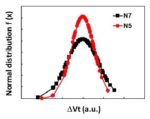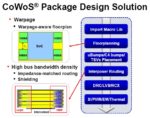It is quite amazing that silicon-based devices have been the foundation of our industry for over 60 years, as it was clear that the initial germanium-based devices would be difficult to integrate at a larger scale. (GaAs devices have also developed a unique microelectronics market segment.) More recently, it is also rather … Read More
Author: Tom Dillinger
A Research Update on Carbon Nanotube Fabrication
3DIC Design, Implementation, and (especially) Test
The introduction of direct die-to-die bonding technology into high volume production has the potential to substantially affect the evolution of the microelectronics industry. The concerns relative to the “end of Moore’s Law”, the diminishing returns of continued (monolithic) CMOS process scaling, and the disruptive effect… Read More
Advanced Process Development is Much More than just Litho
The vast majority of the attention given to the introduction of each new advanced process node focuses on lithographic updates. The common metrics quoted are the transistors per mm**2 or the (high-density) SRAM bit cell area. Alternatively, detailed decomposition analysis may be applied using transmission electron microscopy… Read More
Design Considerations for 3DICs
The introduction of heterogeneous 3DIC packaging technology offers the opportunity for significant increases in circuit density and performance, with corresponding reductions in package footprint. Yet, the implementation of a complex 3DIC product requires a considerable investment in methodology development for all… Read More
A Fast Checking Methodology for Power/Ground Shorts
The most vexing problem for physical implementation engineers is debugging errors due to power-ground “shorts”, as reported by the layout-versus-schematic (LVS) physical verification flow. The number of polygons associated with each individual grid is large – an erroneous connection between grids results in a huge number… Read More
Highlights of the TSMC Technology Symposium – Part 3
Recently, TSMC held their 26th annual Technology Symposium, which was conducted virtually for the first time. This article is the last of three that attempts to summarize the highlights of the presentations. This article focuses on the technology design enablement roadmap, as described by Cliff Hou, SVP, R&D.
Key Takeaways… Read More
Highlights of the TSMC Technology Symposium – Part 2
Recently, TSMC held their 26th annual Technology Symposium, which was conducted virtually for the first time. This article is the second of three that attempts to summarize the highlights of the presentations. This article focuses on the TSMC advanced packaging technology roadmap, as described by Doug Yu, VP, R&D.
Key… Read More
Highlights of the TSMC Technology Symposium – Part 1
Recently, TSMC held their 26th annual Technology Symposium, which was conducted virtually for the first time. This article is the first of three that attempts to summarize the highlights of the presentations.
This article focuses on the TSMC process technology roadmap, as described by the following executives:
- Y.J. Mii, SVP,
A “Super” Technology Mid-life Kicker for Intel
Summary
At the recent Intel Architecture Day 2020 symposium, a number of technology enhancements to the Intel 10nm process node were introduced. The cumulative effect of these enhancements would provide designs with a performance boost (at iso-power) approaching 20% – a significant intra-node enhancement, to be sure. The… Read More
Thermo-compression bonding for Large Stacked HBM Die
Summary
Thermo-compression bonding is used in heterogeneous 3D packaging technology – this attach method was applied to the assembly of large (12-stack and 16-stack) high bandwidth memory (HBM) die, with significant bandwidth and power improvements over traditional microbump attach.
Introduction
The rapid growth of heterogeneous… Read More
















The Quantum Threat: Why Industrial Control Systems Must Be Ready and How PQShield Is Leading the Defense